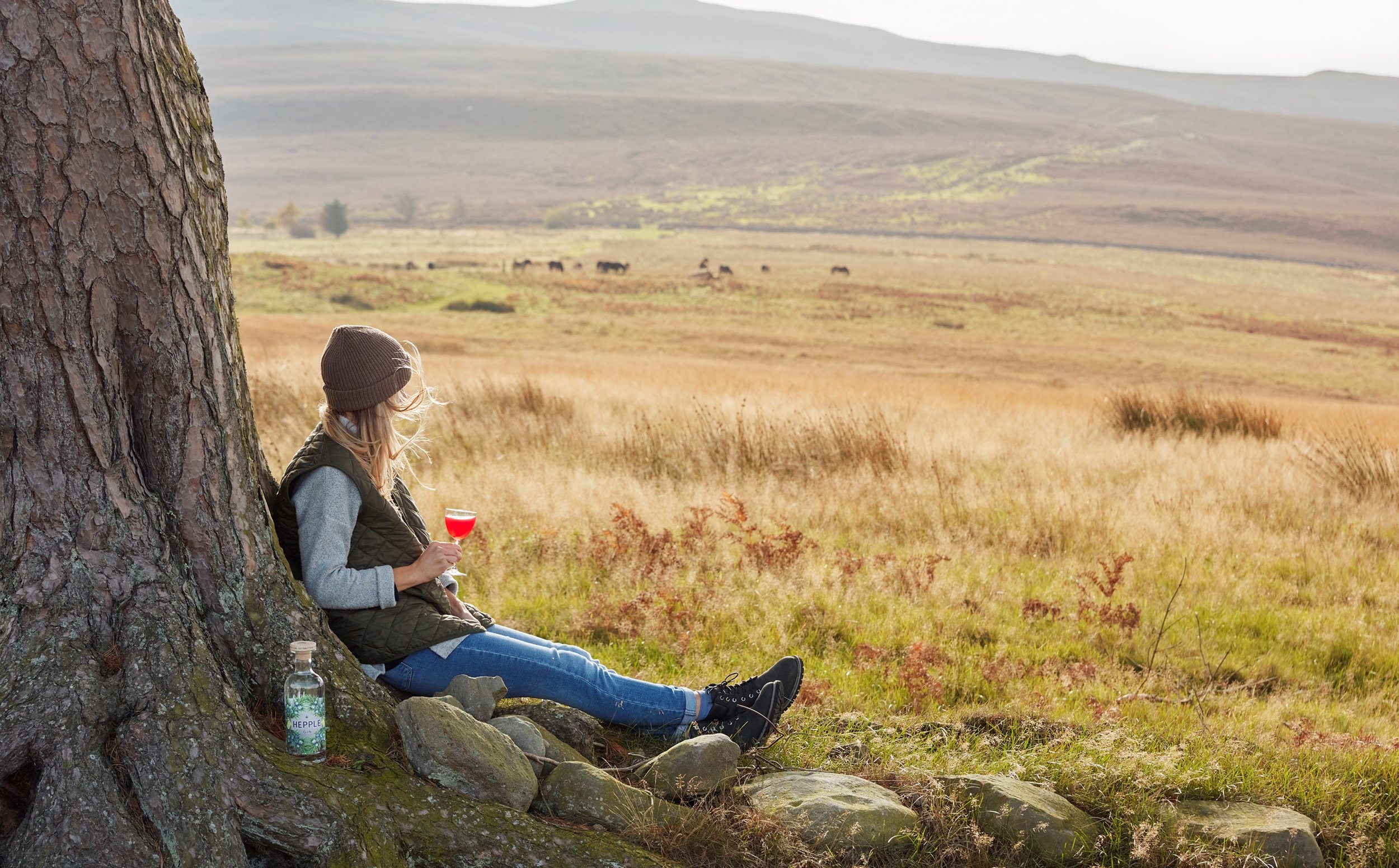Winter Wonders
Majestic Scots Pine, Hepple Estate. © Hepple Estate
When life gets frenetic there is something grounding and restorative about stepping out into wilder places, especially those with ancient trees. I'm so lucky to be able to head out into the low sunlight and walk up the hill to some of our 'Granny Pines'. Taking a moment to watch our herd of Exmoor ponies flowing effortlessly through the landscape, their fuzzy winter coats matching the russet hues of the bracken amongst the heather, crowberry and birch.
It is reassuring to lean in to 'Granny East', rest my cheek against rough, fissured bark, breathe in the familiar pine resin smell and look up into the arms of the canopy to try and spot the Goldcrests I can hear amongst the pine needles.
I often think about conifers in this landscape. Two of the three native British conifers; Juniper and Scots Pine, are here. They look very festive in the sparkling frost! Both species have been present in Britain in fluctuating numbers since the end of the last Ice Age, so it's no wonder it feels like they belong here.
It was thought that the only truly native Scots Pine (Pinus sylvestris) were to be found in the Highlands of Scotland and any Scots Pine growing in England were derived from planted stock. However, in the last few years it has been confirmed by DNA analysis that a small number of trees descended from the original native Scots Pine have survived in remote corners of northern England as well as Ireland.
Could there be some on Hepple?
The quest for native Scots Pine © Hepple Estate
Back in the summer Professor Adrian Manning and I went on a mission to check out a group of promising Scots Pines hidden in a deep cleugh on the moor at Hepple. After a yomp through waist high heather and bilberry, a steep scramble and then a leap over the watercourse, we made it!
Clinging on to the sandstone rocks alongside Rowan, Holly and Juniper were a small group of Granny Pines, plus their much younger offspring. Could they be the real deal? We recorded the grid references, girth measurements and collected some pine needles to send off to Edinburgh for DNA analysis.
It would be wonderful if these trees are found to be descendants of the original native Scots Pine, the backbone of the celebrated Caledonian Pine Forest. At Hepple, and the surrounding Simonside Hills in Northumberland, there is the potential to regenerate the Northumbrian version of this amazing ecosystem in which a wealth of native species including Aspen, Cowberry, Pearl-bordered Fritillary, Black Grouse, Raven, Red Squirrels and Pine Marten thrive.
We can’t wait to get the DNA analysis results in 2024, so watch this space!
Alien Conifer Control
Dedicated NWT volunteers taking a well-earned rest from removing alien conifers. © Hepple Estate & NWT
Out on the moor, we continue to battle with non-native conifers invading from a neighbouring Forestry Commission plantation. These alien trees threaten to take over our internationally important heath, bog and native upland woodland and scrub habitats.
We are very grateful to local contractors and the fantastic team of volunteers from Northumberland Wildlife Trust who have been out in all weathers helping to remove the Sitka Spruce and Lodgepole Pine saplings. A few were taken home to provide Christmas greenery and everyone went away with glowing cheeks!
Juniper Conservation
Planting young home-grown juniper at Hepple. © Hepple Estate
Through the winter we continue to propagate more native Juniper from the ripe berries collected during the autumn from the fruiting female bushes growing at Hepple. Once widespread, this species is now very rare in the wild in England and is the focus for conservation action where it is still found.
Each year, the Hepple Team, supported by volunteers, plant out the young Juniper to supplement the aging native population. We hope we can create the special suite of conditions to enable more of the wild Juniper to regenerate naturally. This includes: ground disturbance for germination niches; low levels of grazing to prevent competition from other plants whilst not eating off all the Juniper seedlings - tricky!
Hopefully this will benefit species including the beautiful, but declining Ring Ouzel, also known as the Mountain Blackbird. Ouzels are known to feed up on Juniper berries before migrating south to northern Africa for the winter.
So if you are enjoying a Hepple Gin & tonic or cocktail over the coming weeks, you can do so knowing you are supporting not only the recovery of wild native Juniper, but the restoration of the wider ecosystem. Something worth raising a glass to!
One way to enjoy Hepple Gin © Hepple Estate & Hepple Spirits Co
To visit Hepple and find out more about what we are up to, look out for our new events in 2024, including Spirit of the Wild run jointly with Wild Intrigue.
For more information about native Scots Pine and Juniper conservation, check out the great work being done by Trees for Life and Plantlife.
Download a copy of the fascinating paper on the status, significance and research into wild Scots Pine in northern England in the recently published Journal of British and Irish Botany.





